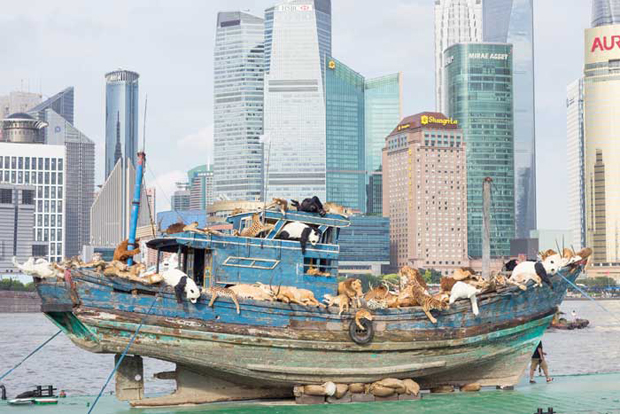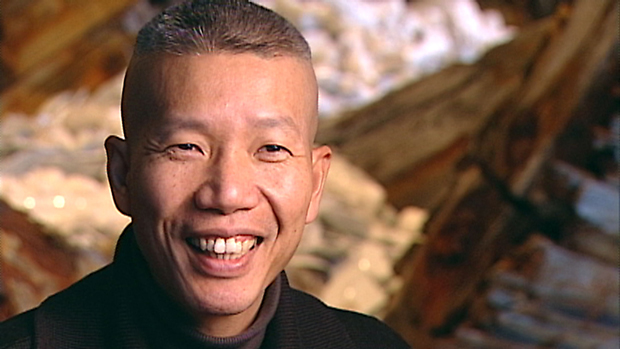
What has Cai Guo-Qiang just sailed into Shanghai?
Our Contemporary Artist series artist sparks environmental debate with his ark of sick animals
A lot of Chinese artists seem to relish their daily battles with a government that, in some quarters at least, still feels the need to repress certain forms of artistic personal expression. Cai Guo-Qiang - one of our firm favourites here at Phaidon.com - is one such artist.
Best known for his spectacular gunpowder projects, Cai has explored a diversity of media and art forms, including an extension of the Great Wall of China made from fire, designed to be seen from outer space by extraterrestrial beings; feng shui rearrangements of public and private spaces; participatory projects with kites, jacuzzis and mini golf courses; and sculptures constructed from melted-down cars and abandoned boats, all of which are featured in our splendid contemporary artists series monograph with him which you can look at here.
His latest show, The Ninth Wave, concerns environmental degradation and its olfactory impact on those taking a strolll down the Bund in Shanghai, as it arrived was every bit the equal to its visceral, visual effect.
The show, at the city's Power Station of Art features as its centrepiece, a run down fishing boat carrying 99 stuffed animals in various stages of decay and in varying poses of sickness. It's arrival, (transported down the city's Huangpu River river on a barge) caused many to recall the dumped pig carcasses that washed up on the shore the year before last.
Even though the Chinese government refused a permit allowing the barge to sail down Huangpu, it came anyway. “I wanted to focus on environmental issues, which are more and more critical in China, and influence how people think,” Cai told The Art Newspaper at a preview of the show on Friday. “Art is not about social criticism, I do not want to preach to the public of China.”

The show's other standout piece is Silent Ink, a site-specific 250 sq.metre lake excavated from the museum floor and filled with 20,000 litres of calligraphy ink. An ink waterfall gushes from the ceiling. The work is a meditation on Chinese traditional landscape art, water pollution and contemporary art’s commercialisation.
Incidentally, there's a great interview in our Cai Guo-Qiang book in which the artist reflects on the influence of Western ideals and culture on his work and how it turned him on to a new way of thinking about his work, as he tells interviewer Octavio Zaya:
"The influence of Western ideas and trends became a weapon for Chinese artists to use against their own tradition, politically and socially speaking. What influenced me most when we began to learn about Western contemporary art in the 1980s was not a particular work, tendency or idea, but rather the huge amount of information suddenly made available: this vast, hundred year span of modern and contemporary Western art. The main impression it left me with was, 'Damn, you can do anything you want!' It was like a certain form of Zen enlightenment when the teacher hits you over the head and you 'wake up' with a new realization or vision." As well as an overview of Cai Guo-Qiang's work - from the earliest paintings to the gunpowder pieces - the book also takes a look at his work practices and features a couple of essays by Cai - a great one on chance and another on some of his unrealised projects. Check out the book here.